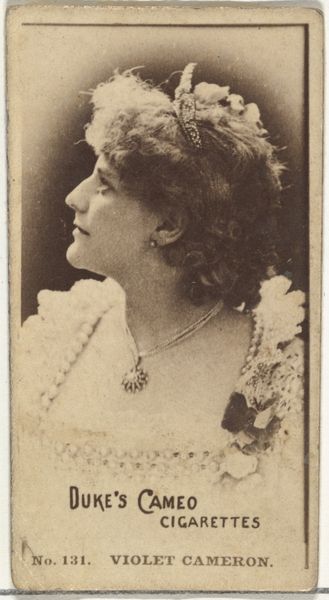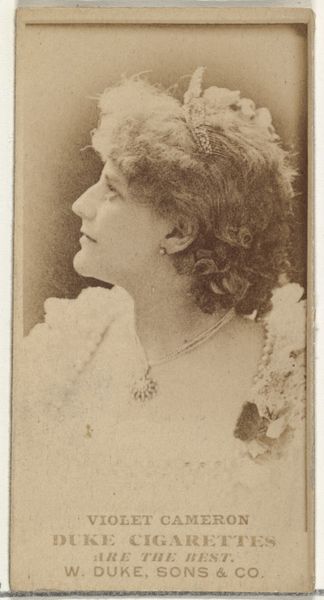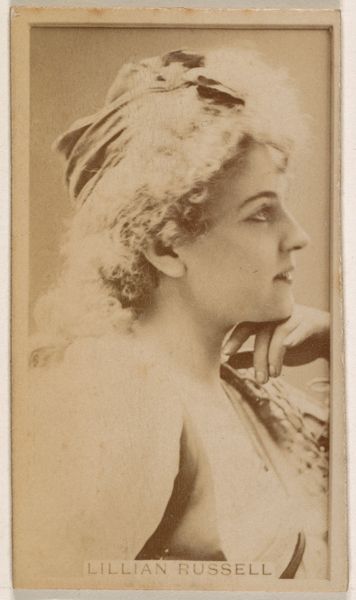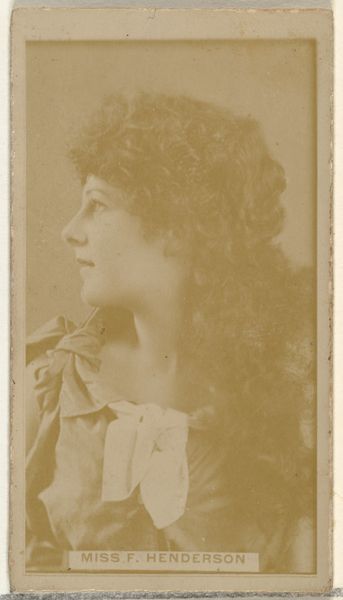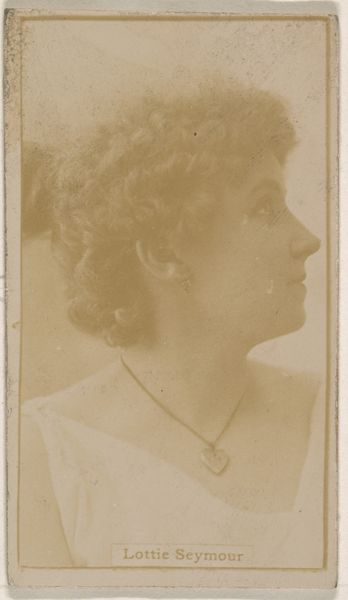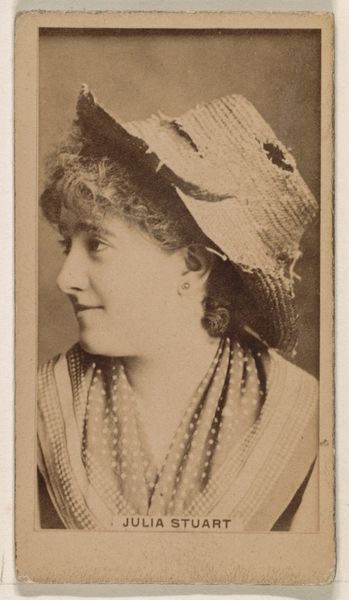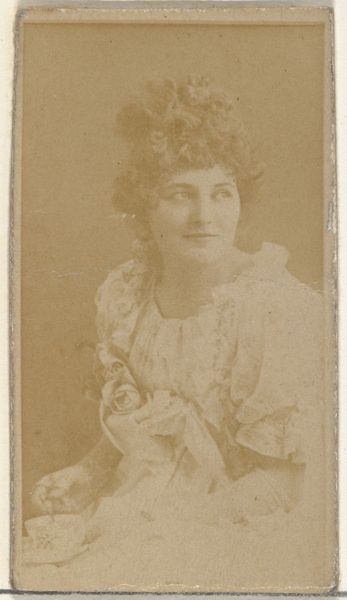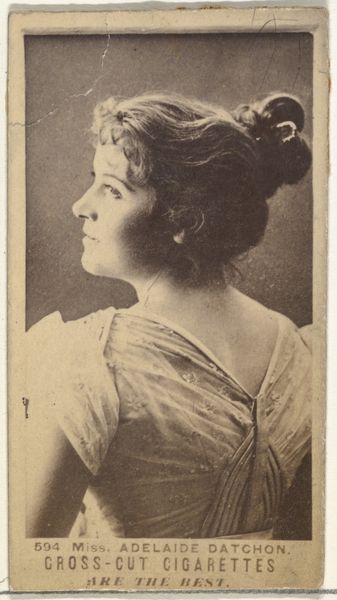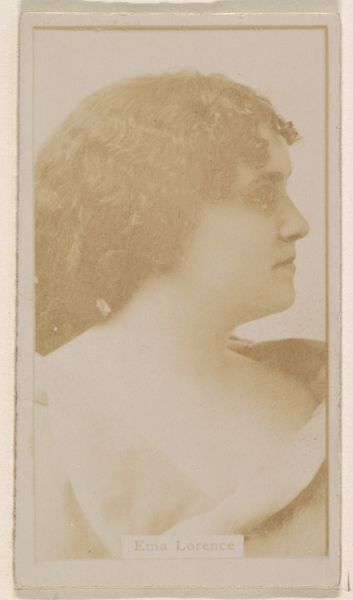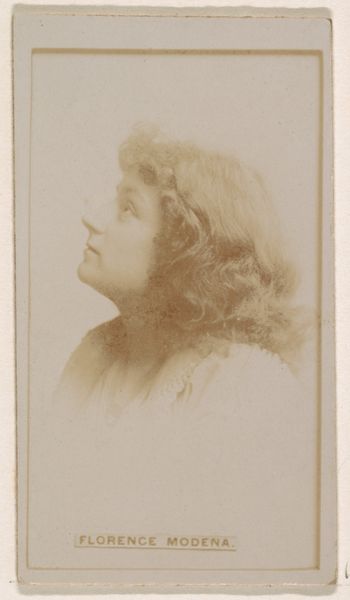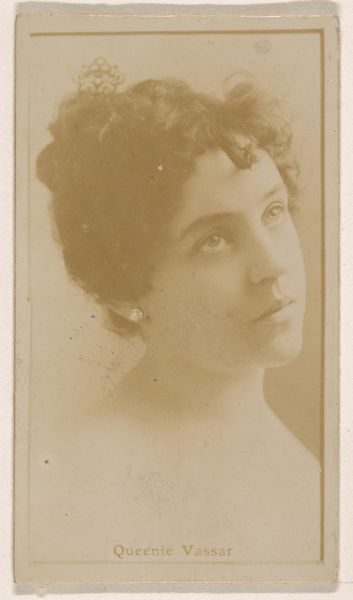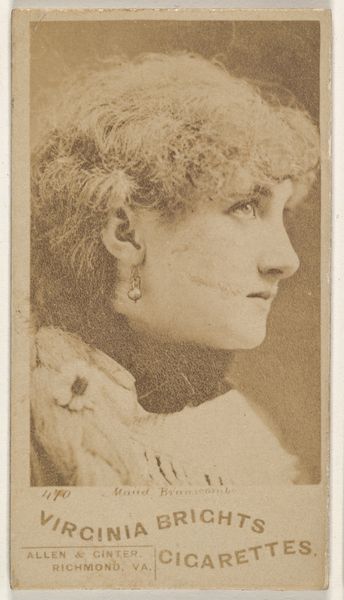![[Actress portrait in profile], from the Actors and Actresses series (N145-6) issued by Duke Sons & Co. to promote Duke Cigarettes by W. Duke, Sons & Co.](/_next/image?url=https%3A%2F%2Fd2w8kbdekdi1gv.cloudfront.net%2FeyJidWNrZXQiOiAiYXJ0ZXJhLWltYWdlcy1idWNrZXQiLCAia2V5IjogImFydHdvcmtzL2E0YWU3Y2FmLTRkNTUtNGU1Mi1hMDU3LWU1ZGNlMGVlOTYxNS9hNGFlN2NhZi00ZDU1LTRlNTItYTA1Ny1lNWRjZTBlZTk2MTVfZnVsbC5qcGciLCAiZWRpdHMiOiB7InJlc2l6ZSI6IHsid2lkdGgiOiAxOTIwLCAiaGVpZ2h0IjogMTkyMCwgImZpdCI6ICJpbnNpZGUifX19&w=3840&q=75)
[Actress portrait in profile], from the Actors and Actresses series (N145-6) issued by Duke Sons & Co. to promote Duke Cigarettes 1880s
0:00
0:00
drawing, print, photography
#
portrait
#
drawing
# print
#
charcoal drawing
#
photography
Dimensions: Sheet: 2 11/16 × 1 3/8 in. (6.8 × 3.5 cm)
Copyright: Public Domain
Curator: This is an actress's portrait from the Actors and Actresses series by W. Duke, Sons & Co., dating back to the 1880s. These were distributed with Duke Cigarettes. Editor: My first thought is of its faded elegance. The sepia tone evokes a bygone era. It's interesting that an actress's portrait should function as advertising material. Curator: Precisely. Think about the cultural capital associated with actresses during this period. This intersects with a burgeoning consumer culture; images of prominent women were essentially tools in constructing brand value. Editor: It really highlights the commodification of fame, then, doesn't it? But also the very material act of printing these. What was the paper like, the ink? The print quality suggests mass production techniques typical for promotional items. And cigarettes too, an object associated with the everyday man, adorned with imagery meant to represent refinement and elegance, perhaps as an escape from labor? Curator: That speaks volumes about the societal values embedded within these objects. The image of the actress in profile, carefully staged, reflects beauty standards of the time—class, race, gender expectations—ideals marketed directly to consumers to be consumed literally and figuratively. Editor: So, on one level it promotes an unattainable ideal to sell tobacco. Were they using some type of drawing transferred and then printed on these cards in mass quantity? These were not small, intimate works of art, rather made through processes developed to saturate the culture with products enmeshed with propaganda. Curator: Right, it provokes questions about authenticity. Was this photograph touched up by hand or engraved somehow before printing? What did this "image work" look like? This also serves to enforce prevailing gender roles. These actresses become objects of public consumption, packaged to sell other commodities. Editor: Examining such everyday materials can provide powerful insight into the conditions of making, circulation and meaning during periods when capitalism had saturated life, where leisure itself was an opportunity to sell back desires. Curator: I agree; seeing that photo situated in time is such a powerful symbol for identity formation and the politics of consumption. Editor: And how easily objects like this slip into museum collections! Amazing what becomes visible when examining humble things through this lens.
Comments
No comments
Be the first to comment and join the conversation on the ultimate creative platform.
